On October 10, 2024, the 13th Party Central Committee issued Decision No. 190-QD/TW with the Party Election Regulations.
Nam Dinh Newspaper introduces the full text of the Regulation:
ELECTION REGULATIONS IN THE PARTY
(Attached to Decision No. 190-QD/TW, dated October 10, 2024 of the 13th Party Central Committee)
----------
Chapter I
GENERAL PROVISIONS
Article 1. Subjects and scope of regulation
This regulation applies to elections at Party cell congresses, Party congresses at all levels; elections at executive committee conferences, and inspection committee conferences.
The election at the National Congress of the Party is decided by the Congress.
Party committees and organizations that introduce party members to run for leadership positions in the State, the Fatherland Front, socio- political organizations and mass associations assigned by the Party and the State shall apply this Regulation.
Article 2. Election principles
Elections within the Party are conducted according to the principles of democratic centralism; equality, directness, and majority. Election results from Party cells to Party committees directly under the Central Committee must be approved by the competent Party Committee according to regulations.
Article 3. Form of election
1. Secret ballot is conducted in the following cases:
- Elect the Party Executive Committee, Party Cell (abbreviated as Party Committee); elect the Party Central Executive Committee.
- Elect the standing committee, secretary and deputy secretary of the Party Committee.
- Elect the Politburo, General Secretary , Secretariat.
- Elect the inspection committee, chairman and vice chairman of the inspection committee.
- Elect delegates to attend the congress of the upper level party committee.
- Take ballots to ask for opinions on candidates to put on the election list.
- Introduce party members to run for leadership positions of the State, the Fatherland Front, socio-political organizations, and mass associations assigned by the Party and the State.
2. Show of hands voting (using party membership cards to vote) is carried out in the following cases:
- Electing executive and support bodies for congresses and conferences (congress presidium, secretariat, congress secretary, conference chairman, delegate qualification review committee, vote counting committee).
- Through the number and list of voters.
Chapter II
DUTIES OF THE COMMITTEE TO CONVEY THE CONGRESS, ORGANIZATIONS TO MANAGE AND ASSIST THE CONGRESS IN THE ELECTION WORK
Article 4. Tasks of the Party Committee convening the congress
1. Prepare the personnel plan for delegates to attend the congress at a higher level; the personnel plan for the Party Committee, Standing Committee, Secretary, Deputy Secretary, Inspection Committee, Chairman of the Inspection Committee, Deputy Chairman of the Inspection Committee and the conditions for organizing the first executive committee meeting to elect the Standing Committee, Secretary, Deputy Secretary, Inspection Committee, Chairman of the Inspection Committee at the same level according to regulations.
2. Receive candidacy dossiers for the Party Committee of official Party members who are not congress delegates (sent to the Party Committee at least 15 working days before the official opening of the congress) to direct the examination and forward to the presidium to report to the congress for consideration and decision.
3. Announce the number of delegates and allocate delegates to the Party Committees and Party cells. Direct the election of delegates to ensure compliance with the prescribed principles and procedures. Decide and announce the opening time of the congress 30 working days in advance.
4. Provide documents to the delegate qualification examination committee on the situation, results of delegate elections and issues related to delegate qualifications.
5. Provide documents to the presidium to answer questions requested by party members and congress delegates regarding candidates.
6. Prepare documents for the new Party Committee to elect leadership positions of the new Party Committee and Inspection Committee at its first meeting.
7. Prepare the number, list and personnel of the presidium, congress chairman, secretariat, congress secretary, and delegate qualification review committee to submit to the congress for consideration and approval by vote.
Article 5. Duties of the presidium and congress chairman
1. Conducting elections.
2. Provide guidance for the congress to discuss and thoroughly understand the criteria for Party Committee members, the number and structure of the Party Committee; the criteria, number and structure of delegates attending the Party Congress at a higher level.
3. Nominate a list of personnel prepared by the Party Committee convening the congress. Provide guidance on candidacy and nomination.
4. Compile the list of candidates and nominees; propose cases that can and cannot be withdrawn from the election list, report to the congress for consideration and decision.
5. Collect votes from the congress for the candidates and nominees. Prepare the election list, collect votes from the congress to approve the number and election list.
6. Introduce the list of the counting committee and the head of the counting committee for the congress to vote on. Direct the activities of the counting committee, disseminate the election rules and procedures at the congress.
7. Respond to delegates' opinions on personnel during the election preparation process.
8. Ensure the leadership of the immediate superior Party Committee and direct the correct implementation of the personnel plan for the Standing Committee, Secretary, and Deputy Secretary of the Party Committee approved by the competent authority until the new Standing Committee, Secretary, and Deputy Secretary of the Party Committee are elected.
Article 6. Duties of the secretariat and congress secretary
1. Record minutes summarizing discussion opinions, draft conclusions and resolutions of the presidium, congress chairman, and congress related to the election.
2. Assist the presidium and congress chairman in synthesizing the results of candidacy and nomination to serve the preparation of the election list before the congress elects the vote counting committee.
3. Manage and distribute documents and publications of the congress under the direction of the presidium and chairman of the congress. Collect, preserve and help the presidium and chairman of the congress send to the new term's Party Committee (through the Party Committee office) complete records, documents and publications of the congress.
Article 7. Duties of the congress delegate qualification examination committee
1. Review the report of the Party Committee convening the congress on the implementation of principles, procedures, situation and results of the election of delegates; issues related to the qualifications of delegates.
2. Consider and conclude petitions, complaints and denunciations regarding the qualifications of delegates resolved by Party committees at all levels; report to the presidium to submit to the congress for consideration and decision on cases where the qualifications of delegates are not recognized, cases where there are applications to withdraw from the list of delegates and the conversion of alternate delegates into official delegates who have been convened.
3. Report to the congress the results of the qualification examination of delegates for the congress to consider and vote for recognition.
Article 8. Vote counting committee
1. The ballot counting committee is the body assisting the election of the congress, introduced by the presidium and chairman of the congress, and approved by the congress. The ballot counting committee consists of a number of official delegates in the congress of delegates, or a number of official party members in the congress of party members whose names are not on the election list.
The number, list of members and heads of the vote counting committee at congresses at all levels are selected and introduced by the presidium and chairman of the congress and approved by the congress by vote.
The head of the ballot counting committee directs the activities of the ballot counting committee, assigns tasks to members; is responsible to the presidium and the congress chairman for the activities of the ballot counting committee.
2. The counting committee has the following duties:
- Instructions on how to vote, check, seal ballot boxes, distribute ballots directly to delegates (or by delegation), check the number of ballots issued and collected to report to the congress, and count votes.
- Review and conclude on invalid votes and complaints about the election in the congress.
.- Prepare a vote counting report to the presidium and congress chairman and announce the election results; sign the election minutes, seal the ballots and transfer them to the presidium and congress chairman to hand over to the new term's Party Committee for storage according to regulations.
If the vote counting is done by computer, the counting committee may employ a number of technical staff who are not congress delegates. The technical staff serving the vote counting are directly managed and supervised by the counting committee.
- Except for the ballot counting committee and technical staff performing the ballot counting task, no one is allowed to go to the place where the ballot counting committee is working.
Chapter III
CANDIDATES, NOMINATIONS, VOTING, ELECTION LIST, BALLOTS
Article 9. Candidacy and candidacy procedures
1. Candidacy is applied in the following cases:
a) Official party members run for election at the party congress of which they are members. Official delegates of the congress run for election at the congress of delegates.
b) Official Party members who are not congress delegates apply for candidacy at the grassroots Party organization congress or apply for candidacy to be elected to the Party Committee of the congress of delegates from the district level and equivalent or higher.
c) Executive Committee members run for election to the Standing Committee; Standing Committee members run for election as Secretary or Deputy Secretary; in cases where the Party Committee only elects the Secretary or Deputy Secretary and does not elect the Standing Committee, Party Committee members have the right to run for election as Secretary or Deputy Secretary (except for cases specified in Article 11 of this Regulation). In cases where the Party cell congress does not elect a Party cell committee, official Party members have the right to run for election as Secretary or Deputy Secretary.
d) Members of the Party Central Committee run for election to the Politburo and Secretariat; Politburo members run for election to the General Secretary position (except for the cases specified in Article 11 of this Regulation).
d) Party committee members run for election to the inspection committee, standing committee members run for election to be elected as chairman of the inspection committee of their Party committee (except for the cases specified in Article 11 of this Regulation).
e) Members of the inspection committee run for election as deputy chairman of the inspection committee.
2. Application procedure:
a) Official party members at the party congress can run for election directly at the congress or submit an application to the congress presidium. At the grassroots congress, official party members who are not congress delegates, if running for election, must submit an application to the grassroots committee.
b) Official delegates at the congress run for election directly at the congress or send an application to the congress presidium.
c) Party committee members run directly at the Party committee conference to be elected to the Standing Committee (Politic Bureau, Secretariat) and to the Inspection Committee.
d) Inspection committee members run directly at the inspection committee conference to be elected as deputy head of the inspection committee.
d) Party members who are not congress delegates, if running for election to the Party Committee at the district level or equivalent or higher, must complete their candidacy dossier and submit it to the organizing agency of the Party Committee convening the congress no later than 15 working days before the opening date of the congress. The candidacy dossier includes:
- Application form.
- Personal history certified by the local Party Committee.
- Declaration of assets and income of individuals and families according to regulations.
- Health certificate.
- Comments from the local Party Committee at the place of living, working and residing according to regulations.
- Conclusion of political standards of competent authority according to regulations.
- Copies of diplomas and certificates of professional qualifications, expertise, and political theory (certified by the agency, unit managing the staff or by the competent authority).
The grassroots Party Committee where the Party member is active and where the Party member resides is responsible for confirming and commenting on the candidate. If any issues need to be examined and verified beyond the authority, the immediate superior Party Committee shall consider and decide.
The organizing agency of the Party Committee convening the congress is responsible for coordinating with relevant agencies to check the validity of the documents and qualifications of the candidates.
Article 10. Nomination and nomination procedure
1. Nomination is applied in the following cases:
a) The presidium (chairman) of the congress (conference) nominates a list of personnel prepared by the Party Committee convening the congress (conference).
b) At the party congress, official party members, temporary party members and probationary party members all have the right to nominate official party members of the party committee or party cell to be elected as delegates to the party congress of a higher level or to be elected to the party committee of their level.
c) At the congress of delegates, official delegates nominate party members who are delegates and official party members who are not delegates of the party congress of their level to be elected to the Party Committee; nominate official delegates of the congress of their level to be elected as delegates to the congress of the higher-level party committee.
d) Executive Committee members nominate other executive committee members to be elected to the standing committee at the executive committee meeting; nominate standing committee members to be elected as secretary or deputy secretary (except for the cases specified in Article 11 of this Regulation).
d) A member of the Party Central Committee nominates another member of the Party Central Committee to be elected to the Politburo, the Secretariat, and the Central Inspection Committee; nominates a member of the Politburo to be elected as General Secretary (except for the cases specified in Article 11 of this Regulation).
e) Executive Committee members nominate other executive committee members to be elected as members of the inspection committee; nominate inspection committee members to be elected as chairman of the inspection committee (except for the cases specified in Article 11 of this Regulation).
g) A member of the inspection committee nominates another member of the inspection committee to be elected as deputy head of the inspection committee.
2. Nomination procedure:
a) At the party congress, party members nominate official party members of their party organization by direct nomination or by written submission to the congress presidium. At the grassroots congress, official party members who are not official congress delegates are nominated for election to the Party Committee in writing, with the consent of the nominee.
b) At the congresses of delegates at the district level and equivalent or higher, official delegates of the congress nominate party members who are delegates and official party members who are not delegates of the congress of the party committee at their level to be elected to the Party Committee; nominate official delegates of the congress at their level to be elected as delegates to the congress of the party committee at the higher level.
When an official delegate of a congress nominates a party member who is not a delegate of the congress for election to the Party Committee, the nomination must be made in writing with the person's profile attached as prescribed and must have the written consent of the nominee.
c) The Party Committee convening the congress has the responsibility to help the congress examine and verify the background and qualifications of the nominees and candidates at the congress.
3. The person nominating a candidate to join the Party Committee at the congress must be responsible to the congress for the qualifications and conditions for the candidate to join the Party Committee. After the congress, if it is verified that the nominee does not meet the qualifications and conditions as prescribed, depending on the level of violation, the nominator will be considered for handling according to Party regulations.
Article 11. Candidacy and nomination of Party Committee members, Standing Committee members, Politburo members, and Secretariat members
1. The Party Committee member convening the congress is not allowed to nominate personnel outside the list nominated by the Party Committee; is not allowed to run for election or accept nominations if his/her name is not on the Party Committee's nomination list.
2. At meetings of the executive committee, members of the standing committee are not allowed to nominate personnel outside the list nominated by the standing committee of the Party Committee; they are not allowed to run for election or receive nominations if their names are not on the nomination list of the standing committee of the Party Committee.
3. At the meetings of the Party Central Committee, Politburo members and Secretariat members are not allowed to nominate personnel outside the list nominated by the Politburo; they are not allowed to run for election or receive nominations if their names are not on the Politburo's nomination list.
Article 12. Candidacy and nomination as delegate to attend congress of the directly superior party committee
1. At the party congress, only official party members are allowed to run for election at the congress of their level to be elected as delegates to the congress of the higher-level party organization. Official party members, temporary party members and probationary party members have the right to nominate official party members to be elected by the congress as delegates to the congress of the higher-level party organization.
2. At the congress of delegates, only official delegates can run for election and nominate official delegates at the congress of their level to be elected by the congress as delegates to attend the congress of the higher-level party committee.
3. The congress presidium nominates personnel convened by the congress committee to prepare for the congress to elect as delegates to attend the congress of the higher-level party committee.
Article 13. Right to vote
1. Only official delegates of congresses of delegates at all levels and official party members of party congresses have the right to elect their own level party committees and elect delegates to attend the higher-level party congresses.
2. At the party congress, temporary party members and probationary party members do not have the right to vote.
Article 14. Regulations on balance and electoral list
1. The number of candidates in the election list for the Party Committee and the Standing Committee of the Party Committee must be greater than the number of candidates to be elected; the maximum surplus is decided by the congress (conference) but must not exceed 30% of the number to be elected, in which the Party Committee convenes the congress (conference) to prepare the number of Party Committee and Standing Committee personnel with a surplus of 10% - 15%.
2. The list of candidates prepared by the Party Committee at the level convening the congress (conference) is the official nomination list for the congress (conference).
3. The congress (conference) discussed and voted to establish the following list:
- Candidates and nominees who are not nominated by the Party Committee must ensure the standards and conditions according to regulations and must be approved by more than 30% of the total number of delegates (Party members) attending the congress (conference) to be included in the list for the congress (conference) to consider and decide.
- In case the list of personnel nominated by the Party Committee convening the congress, nominated by the congress (conference) delegates and candidates does not have a balance of 30% compared to the number of candidates to be elected, the congress (conference) will decide.
- In case the list of personnel nominated by the Party Committee, nominated by congress (conference) delegates and candidates is more than 30% of the number of candidates to be elected, the congress (conference) shall consult on the persons nominated by congress (conference) delegates and candidates. Based on the results of the consultation, select from the number of votes in agreement from high to low to create a list of candidates with a maximum balance of no more than 30% of the number of candidates to be elected.
In case the number of candidates nominated or running for election is more than 30% of the number of candidates needed to be elected because at the end of the list there are many people with the same number of votes, the congress (conference) will consider and decide to select according to the order of priority of party structure and age (in case of equal party age, they will all be included in the election list).
4. The electoral list is arranged in alphabetical order by name A, B, C..., if there are many people with the same name, they are arranged by last name; if the last name is also the same, they are arranged by middle name; if all three of these data are the same, the person with higher party seniority is arranged by name above.
5. In case of needing to elect from 1 to 6 people, the election list must have a maximum balance of 1 person.
6. If the number of candidates elected in one election is not enough, the congress (conference) will decide whether to hold another election or not. The list of candidates for the next election must have a balance taken from the previous election results from highest to lowest of those who were not elected.
Article 15. Ballots
1. The ballot paper prints the full names of the people on the election list (in places where there are no conditions to print ballots, the congress's vote counting committee records the election list on the ballot paper); the stamp of the Party Committee convening the congress is affixed in the upper left corner of the ballot paper; the Party cell directly under the grassroots Party Committee (or a Party unit) is affixed with the stamp of the grassroots Party Committee.
In case there is a surplus on the ballot, the ballot is divided into two columns: Serial number, last name and first name. If a voter does not vote for anyone on the ballot, he/she must cross out both the last name and first name of the person he/she does not vote for.
In case the list of candidates has no balance, the ballot is divided into 4 columns: Serial number, full name; agree; disagree. Voters choose to mark X in the agree box or disagree box corresponding to the name of the person on the list of candidates.
2. Valid and invalid votes:
- Valid ballots are ballots issued by the ballot counting committee, ballots that are sufficient or insufficient for the number of votes required; ballots with only one person on the ballot list, the voter marks an X in one of the two boxes agreeing or disagreeing; ballots with multiple votes without a balance, the voter marks an X in both boxes (agreeing and disagreeing) or does not mark an X in both boxes (agreeing and disagreeing) corresponding to the full name of one or several people on the ballot list.
- Invalid ballots are ballots not issued by the ballot counting committee; ballots with more votes than the prescribed number; ballots not voting for anyone on a multi-person electoral list; ballots with an X in both the agree and disagree boxes or leaving both boxes blank on a electoral list with only one person; ballots with an X in both the agree and disagree boxes corresponding to the full names of all people on a multi-person electoral list; ballots voting for people not on the electoral list; ballots marked or using multiple types of ink; ballots signed or written on.
Article 16. List of candidates
From the grassroots party congress and above, before conducting the official vote, the congress presidium provides a list of candidates (ordered like the election list) for delegates to study in advance.
Chapter IV
ELECTION PROCEDURES
Article 17. Election of Party Committee
1. The congress presidium reports to the congress on the requirements, standards, structure, and number of the new Party Committee, prepared by the Party Committee at the level that convened the congress. The congress discusses the requirements, standards, and structure of the new Party Committee, and votes on the number of Party Committee members (according to the direction and guidance of the higher-level Party Committee on the number of Party Committee members in each Party organization).
2. The congress presidium nominates a list of personnel prepared by the Party Committee at the level convening the congress.
3. Conduct candidacy and nomination.
4. The Presidium compiles the list of candidates and nominees, proposes cases that can and cannot be withdrawn from the election list, and reports to the congress for consideration and decision.
Get the congress's opinion on the candidates and nominees.
5. Prepare the election list; vote of the congress to approve the number and election list.
6. The Presidium introduces a list of the ballot counting committee, including a head of the committee and a number of members who are delegates whose names are not on the election list. The Congress votes to approve the list of the ballot counting committee.
7. The ballot counting committee guides the voting method; checks and seals the ballot boxes before voting; distributes ballots to delegates. The congress conducts the election; the ballot counting committee counts the total number of ballots issued, collects them and reports to the congress; counts the ballots and announces the election results of the new term's Party Committee.
8. The Party cell congress directly elects the Party cell executive committee, then elects the Party cell secretary and deputy secretary from among the Party cell executive committee members; where the Party cell executive committee is not elected, the Party cell elects the Party cell secretary, and if necessary, elects a deputy Party cell secretary.
9. Party congresses from the grassroots level to the Central Party Committee, if the direct election of the secretary position is carried out, after the election of the Party Committee, shall collect nomination votes from Party members or delegates of the Congress for the secretary position; compile nomination votes and report to the higher-level Party Committee before conducting the election of the secretary position. Only after the higher-level Party Committee has given its direction shall the election of the secretary position be conducted.
Article 18. Election of delegates to attend the congress of the higher-level Party Committee
1. When electing delegates to a congress of a higher-level Party Committee, the list of official and alternate delegates is compiled into one list; the official delegates are elected first, and the remaining delegates are elected alternate delegates. In case the number of official delegates has been sufficient but there are still some delegates with more than half of the number of summoned Party members or more than half of the number of summoned delegates, then alternate delegates are selected from among those delegates according to the election results from highest to lowest. If there is still a shortage of alternate delegates according to regulations, the congress will decide whether to continue the election or not.
2. Whether the next election list introduces additional delegates outside the previous election list or not is decided by the congress.
Article 19. Election of the presidium or conference chairman at the first meeting of the new term Party Committee
1. The Secretary or Deputy Secretary of the previous term who is re-elected or the comrade authorized by the higher-level Party Committee (if the Secretary or Deputy Secretary of the previous term is not re-elected) shall convene, open and chair the meeting until the Presidium or Conference Chairman is elected. For the first Conference of the Party Central Committee, the provisions of Clause 1, Article 23 of these Regulations shall apply.
2. Elect a presidium or conference chairman with 1 to 3 comrades; the Central Party Executive Committee Conference has 5 comrades.
3. The presidium or the conference chairman (hereinafter referred to as the presidium) reports to the Party Committee for approval of the working program and conduct of election procedures.
Article 20. Election of the Standing Committee
The number of elected members of the Standing Committee of the Party Committee is implemented according to the regulations of the Politburo and the instructions of the higher-level Party Committee, not exceeding 1/3 of the number of Party Committee members elected by the congress.
1. The conference presidium reports on the requirements, standards, structure and proposes the number of standing committee members to be elected.
2. The Party Committee conference discusses the requirements, standards, structure of the Standing Committee, and votes on the number of Standing Committee members.
3. The Presidium reports the list of comrades introduced by the previous Party Committee to the new Standing Committee.
4. Conduct candidacy and nomination.
5. Group meeting to discuss (if necessary).
6. The Presidium reports on the summary of the list of candidates and nominees; proposes cases that can and cannot be withdrawn from the election list, and reports to the conference for consideration and decision.
Take votes from the conference for candidates nominated at the conference (if necessary).
7. Prepare the election list, the conference votes to approve the number and list of candidates for the standing committee.
8. Election, vote counting, announcement of election results.
Article 21. Election of Party Committee Secretary and Deputy Secretary
Comrades running for or nominated to be elected to the positions of Secretary and Deputy Secretary must be comrades who have been elected as members of the Standing Committee; in places where there is no Standing Committee, comrades running for or nominated to be Secretary and Deputy Secretary must be comrades who have been elected as members of the Party Committee.
The number of deputy secretaries elected at each Party Committee level is implemented according to the regulations of the Central Committee and the instructions of the higher-level Party Committee.
1. The conference presidium reported on the request to elect the secretary and deputy secretary.
2. The Presidium reports to the conference the comrades recommended by the previous Party Committee and the immediate superior Party Committee to be elected to the positions of Secretary and Deputy Secretary; reports the results of the congress's recommendation votes for the position of Secretary (if any).
3. Conduct candidacy and nomination.
4. The Presidium reports on the summary of the list of candidates and nominees; proposes cases that can and cannot be withdrawn from the election list, and reports to the conference for consideration and decision.
Take votes from the conference for self-nominated candidates and those nominated at the conference (if necessary).
5. Make a list of candidates; the conference votes on the list of candidates for the election of secretary and deputy secretary.
6. Election (election of secretary first, election of deputy secretary later).
7. Count votes and announce election results.
After being elected, the secretary immediately directs the work of the new Party Committee, and signs documents with the title of Secretary; the previous Secretary hands over work to the new Secretary within 15 working days from the date of the new Secretary. In case the Secretary position has not been elected, the new Party Committee shall unanimously assign a Deputy Secretary to sign documents with the title of Deputy Secretary.
Deputy secretaries of provincial and district military party committees are allowed to sign documents with the title of deputy secretary immediately after being elected.
Article 22. Election of the inspection committee, chairman of the inspection committee, deputy chairman of the inspection committee
Inspection committees at all levels are established from the grassroots party committees upwards, elected by the same-level party committee conference; members of the inspection committee include a number of comrades in the party committee and a number of comrades outside the party committee. Party cell congresses and party committees of departments do not elect inspection committees.
1. The Presidium reports to the conference on the standards, structure, and number of members of the inspection committee according to the regulations and instructions of the Central Committee and the direct superior Party Committee for the conference to consider and decide.
2. The conference discussed the requirements, standards, structure, and voted on the number of members of the inspection committee.
3. The Presidium reports to the conference the list of comrades recommended by the previous term Party Committee to elect the Inspection Committee and the Chairman of the Inspection Committee and the opinions of the new term Standing Committee.
4. Conduct candidacy and nomination.
5. The Presidium compiles the list of candidates and nominees, proposes cases that can and cannot be withdrawn from the election list, and reports to the conference for consideration and decision.
Take votes from the conference for candidates nominated at the conference (if necessary).
6. Prepare the election list, the conference votes to approve the number and election list.
7. Elect the members of the inspection committee first, then elect the chairman of the inspection committee from among the members of the inspection committee.
8. Counting votes and announcing election results.
9. The Inspection Committee elects the Vice Chairman of the Inspection Committee from among the elected members of the Inspection Committee.
After being elected, the head of the inspection committee immediately directs the work of the new inspection committee and signs documents with the title of head of the inspection committee.
Article 23. Election of the Politburo
1. The first session of the Party Central Committee is convened and chaired by the General Secretary of the previous term (re-elected or not re-elected) until the election of the conference Presidium.
In case the General Secretary of the previous term cannot act as convener, the Presidium of the Congress shall appoint a convener.
2. The Presidium of the Central Party Executive Committee Conference reports on the project and proposes the number of Politburo members to be elected.
3. The conference discussed and voted on the number of Politburo members.
4. The Presidium reports the list of comrades nominated by the previous Party Central Committee to the Politburo.
5. Conduct candidacy and nomination.
6. Meet in groups to discuss.
7. The Presidium compiles the list of self-nominated and nominated candidates; proposes cases that can and cannot be withdrawn from the election list, and reports to the conference for consideration and decision.
Take votes from the conference for candidates nominated at the conference (if necessary).
8. Prepare the election list, the conference votes to approve the number and election list of the Politburo.
9. Election, vote counting, announcement of election results.
Article 24. Election of General Secretary
1. The Presidium reports on the requirements, criteria for the General Secretary and the proposed General Secretary personnel introduced by the previous Party Central Committee, the recommendations of the new Politburo, and the results of the General Secretary personnel introduction by the Congress for the conference's reference.
2. Group meeting to discuss and conduct candidacy and nomination.
3. The Presidium compiles the list of self-nominated and nominated candidates; proposes cases that can and cannot be withdrawn from the election list, and reports to the conference for consideration and decision.
Take votes from the conference for candidates nominated at the conference (if necessary).
4. Prepare the election list, the conference votes to approve the number and election list.
5. Election, vote counting, announcement of election results.
Article 25. Election of the Secretariat
1. The General Secretary, on behalf of the Presidium of the Central Party Executive Committee Conference, reported on the project and proposed the number of Secretariat members to be elected.
2. The conference discussed and voted on the number of members of the Secretariat.
3. The Presidium reports the list of comrades nominated by the previous Party Central Committee to the Secretariat.
4. Conduct candidacy and nomination.
5. Group meeting to discuss.
6. The Presidium compiles the list of self-nominated and nominated candidates; proposes cases that can and cannot be withdrawn from the election list, and reports to the conference for consideration and decision.
Take votes from the conference for self-nominated candidates and those nominated at the conference (if necessary).
7. Prepare the election list, the conference votes to approve the number and election list of the Secretariat.
8. Election, vote counting, announcement of election results.
Article 26. Election of the Central Inspection Commission
1. The Presidium reports on the standards, structure, and number of members of the Central Inspection Commission for the conference to consider and decide.
2. The conference voted on the number of members of the Central Inspection Commission.
3. The Presidium nominates the list recommended by the previous Politburo to elect the Central Inspection Committee and the opinion of the new Politburo.
4. Conduct candidacy and nomination.
5. The Presidium compiles the list of self-nominated and nominated candidates; proposes cases that can and cannot be withdrawn from the election list, and reports to the conference for consideration and decision.
Take votes from the conference for candidates nominated at the conference (if necessary).
6. Prepare the election list; the conference votes to approve the number and election list.
7. Election, vote counting, announcement of election results.
Article 27. Election of Chairman of the Central Inspection Commission
1. The Presidium reports on the requirements and criteria for the Chairman of the Central Inspection Commission; personnel proposed to be introduced by the previous Party Central Committee (if any) and recommendations from the new Politburo.
2. Conduct candidacy and nomination.
3. The Presidium compiles the list of self-nominated and nominated candidates; proposes cases that can and cannot be withdrawn from the election list, and reports to the conference for consideration and decision.
Obtain conference votes for self-nominated candidates and candidates nominated at the conference (if necessary).
4. Prepare the election list, the conference votes to approve the number and election list.
5. Election, vote counting, announcement of election results.
Article 28. Election of additional members of the Standing Committee; Secretary, Deputy Secretary, Inspection Committee members, and Chairman of the Inspection Committee
1. The Standing Committee of the Party Committee reports on the request to elect additional members to the Standing Committee, Secretary, Deputy Secretary; members of the Inspection Committee, and Chairman of the Inspection Committee of the Party Committee.
2. The Standing Committee of the Party Committee reports the list of comrades recommended by the Standing Committee of the Party Committee or the immediate superior Party Committee to be elected to the Standing Committee, Secretary, Deputy Secretary; members of the Inspection Committee, and Chairman of the Inspection Committee.
3. Conduct candidacy and nomination.
4. The Standing Committee of the Party Committee compiles the list of candidates and nominees; proposes cases that can and cannot be withdrawn from the election list, and reports to the conference for consideration and decision.
Obtain conference votes for self-nominated candidates and candidates nominated at the conference (if necessary).
5. Prepare the election list, the conference votes to approve the number and election list.
6. Election, vote counting, announcement of election results.
Article 29. Election of the General Secretary (when requested); election of additional members of the Party Central Committee, members of the Politburo, members of the Secretariat, members of the Central Inspection Commission, and Chairman of the Central Inspection Commission
1. The Politburo reports on the request to elect the General Secretary; to elect additional members of the official Party Central Committee (from alternate to official), Politburo members, Secretariat members, Central Inspection Committee members, and Chairman of the Central Inspection Committee.
2. The Politburo reports the list of comrades recommended by the Politburo to be elected as General Secretary; to elect additional members of the official Party Central Committee, Politburo members, Secretariat members, Central Inspection Committee members, and Chairman of the Central Inspection Committee.
3. Conduct candidacy and nomination.
4. Group meeting to discuss (if necessary).
5. The Politburo compiles the list of self-nominated and nominated candidates; proposes cases that can and cannot be withdrawn from the election list, and reports to the conference for consideration and decision.
Take votes from the conference for self-nominated candidates and those nominated at the conference (if necessary).
6. Prepare the election list; the conference votes to approve the number and election list.
7. Election, vote counting, announcement of election results.
Chapter V
CALCULATING AND RATIFYING ELECTION RESULTS
Article 30. Calculation of election results
1. The election results are calculated based on the number of valid votes; valid votes are votes specified in Article 15 of this Regulation. In case there are no remaining votes for multiple votes, the voter who marks an X in both the agree and disagree boxes or does not mark an X in both the agree and disagree boxes corresponding to the full name of a person will not be counted in the election results of that person (that vote is still considered a valid vote).
2. For party congresses: The elected candidate must receive more than half of the votes of the total number of official party members of the convened party committee or branch, except for party members who have been introduced to temporarily participate in activities in other party committees, party members who have been exempted from work and party activities but are not present at the congress (if that party member is present at the congress, party member conference, participates in the election, votes, it is still counted), party members who have been suspended from party activities, prosecuted, indicted, temporarily detained, official party members who are absent during the congress with a legitimate reason and approved by the Party Committee that convened the congress.
3. For the congress of delegates: The elected person must receive more than half of the votes of the total number of official delegates summoned, excluding the number of committee members at the level that convened the congress who are absent throughout the congress, and official delegates who are absent throughout the congress without any alternate delegates to replace them.
4. At the Party Committee conference to elect the Standing Committee, Secretary, Deputy Secretary, Inspection Committee, and Chairman of the Inspection Committee, the elected person must receive more than half of the votes of the total number of Party Committee members, excluding members who have temporarily transferred to the Party and are not present at the conference, and members who are suspended from activities, prosecuted, indicted, or detained.
5. In case the number of people who receive more than half of the votes is greater than the number of people needed to be elected, the elected people will be those with the higher number of votes, taken from top to bottom until the number of people needed to be elected is reached.
6. If at the end of the list of elected candidates there are many people with equal votes and more than the number of candidates to be elected, the chairman or the presidium of the congress (conference) shall make a list of those people with equal votes for the congress (conference) to re-elect and select the person with the higher number of votes, not necessarily more than half. In case of re-electing and the number of votes is still equal, whether to continue the election or not shall be decided by the congress (conference).
Article 31. Election minutes
1. The election minutes are made in 3 copies signed by the representative of the Presidium and the head of the ballot counting committee. The ballot counting committee seals the ballots for the Presidium to hand over to the new term's Party Committee for storage.
The Presidium shall return the election minutes and ballots to the new Party Committee for reporting to the immediate superior Party Committee for consideration and approval.
2. Minutes content:
- Total number of delegates or total number of party members summoned.
- Total number of delegates attending the congress or total number of party members attending the party congress.
- Number of delegates or party members disqualified from attending the congress.
- Number of committee members at the level that convened the congress absent throughout the congress.
- The number of official delegates absent has no alternate delegates to replace them.
Total number of delegates attending the congress or total number of party members attending the congress present at the time of election.
Number of ballots issued.
- Number of votes received.
- Number of valid votes.
- Invalid ballot number.
- Sufficient number of votes.
- The number of votes is less than the number needed to vote (in which 1 is missing, 2 are missing...).
- Number of votes from high to low of each person on the election list (calculated according to the ratio of delegates in the congress of delegates or party members in the convened party congress).
- List of elected candidates.
Article 32. Approval of election results of Party committees, standing committees of Party committees, secretaries, deputy secretaries, directors, deputy directors and members of inspection committees at all levels
For party organizations from the cell level to the party committees directly under the Central Committee, no later than 7 working days after the congress (conference), the new term's Party Committee must report to the immediate superior Party Committee the minutes of the election of the Party Committee, Standing Committee, Secretary, Deputy Secretary, Inspection Committee members, Chairman, Deputy Chairman of the Inspection Committee, and the list of profiles and CVs of each member.
Within 15 working days from the date of receiving the election results report from the lower-level Party Committee, the immediate higher-level Party Committee (at the Central level, the Politburo, where there is a Standing Committee, the Standing Committee is authorized) shall approve the executive committee, the Standing Committee, the secretary, the deputy secretary; the members of the inspection committee, the chairman and the deputy chairman of the inspection committee of the Party Committee.
After the approval decision of the competent authority, the deputy secretaries, members of the standing committee, and deputy heads of the inspection committee can sign with their respective titles in the documents of the Party Committee and the inspection committee.
Chapter VI
HANDLING VIOLATIONS
Article 33. Competence and procedures for handling complaints and violations of Election Regulations
1. Within 15 working days from the closing date of the congress (conference), if there is a petition or complaint about the election, the inspection committee of the immediate superior Party Committee shall be responsible for verifying, re-examining and reporting to the Party Committee of the same level for consideration and decision.
2. If a violation of election principles and procedures is discovered, the higher-level Party Committee has the right to annul the election results of the congress or conference of the lower-level Party Committee and direct the congress (conference) to conduct a re-election; in cases where an individual has been elected to a lower-level Party Committee or Inspection Committee but does not meet the prescribed standards, the higher-level Party Committee has the right to not approve the recognition of the Party Committee member or Inspection Committee member at that level.
Article 34. Handling of violations of election regulations
Those who intentionally obstruct the election or violate election regulations will be considered and handled by the competent Party Committee according to Party disciplinary regulations.
Article 35. Period of storage of ballots
The ballots are sealed by the counting committee and transferred to the presidium for handover to the Party Committee for storage within 6 months. During this period, without a decision from the competent authority, no one is allowed to open the seal without permission.
After 6 months, if there are no complaints or denunciations about the election results, the Party Committee at the same level will decide to cancel those votes.
Chapter VII
TERMS OF IMPLEMENTATION
Article 36. Implementation provisions
1. This Regulation replaces the Party Election Regulation issued together with Decision No. 244-QD/TW, dated June 9, 2014 of the 11th Party Central Committee; it is disseminated to Party cells and implemented uniformly within the Party.
2. Previous regulations on Party elections contrary to this Charter are hereby abolished.
3. The Secretariat provides specific guidance on the implementation of this Regulation.
Source: https://baonamdinh.vn/chinh-tri/202410/quy-che-bau-cu-trong-dang-3e81b6e/








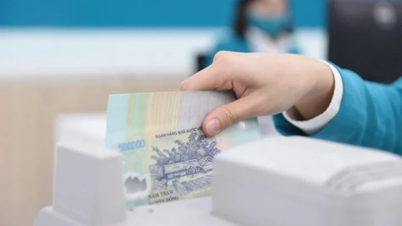

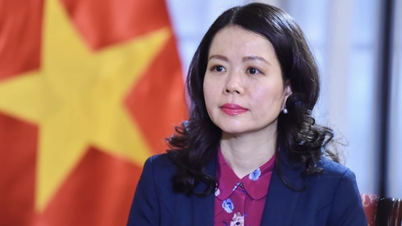


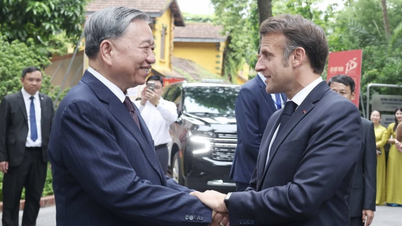
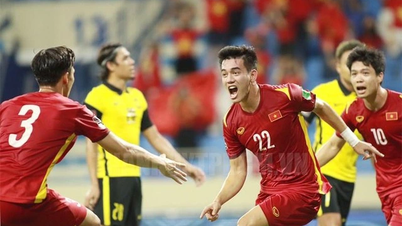



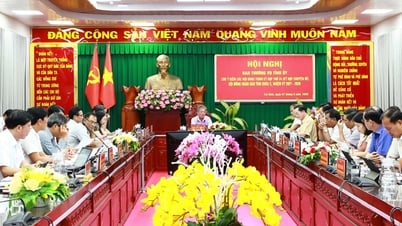
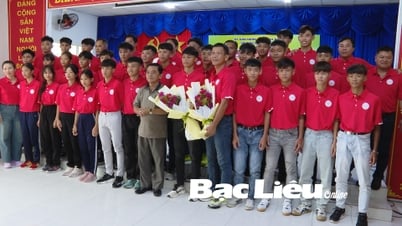
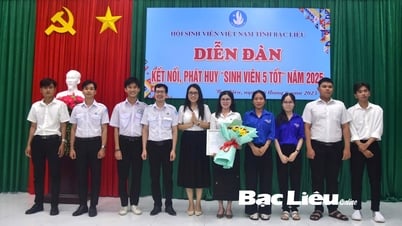
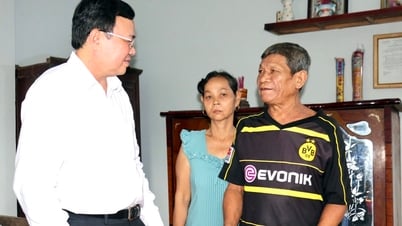
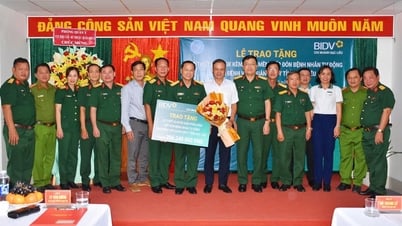






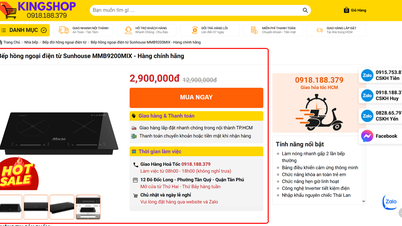
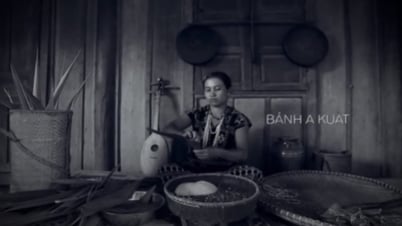





























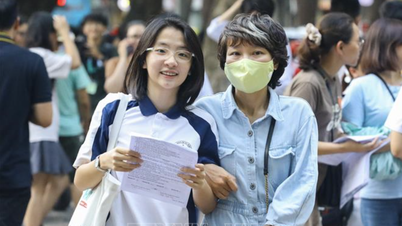
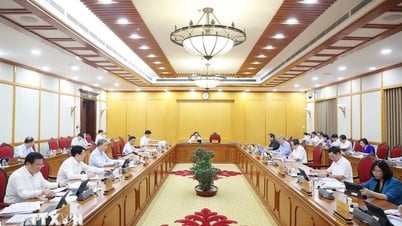
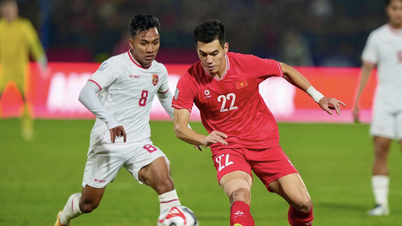


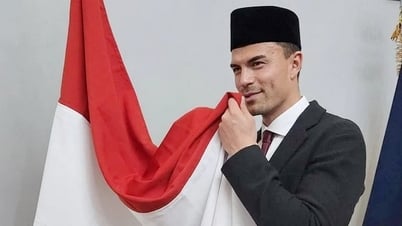













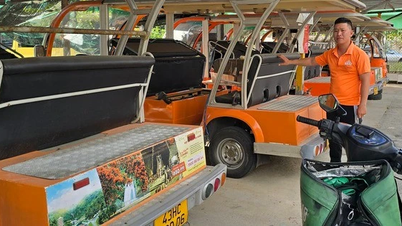

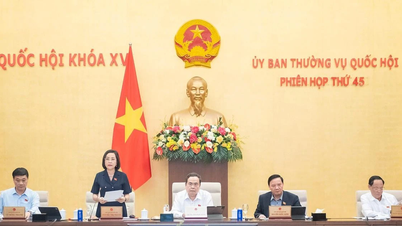

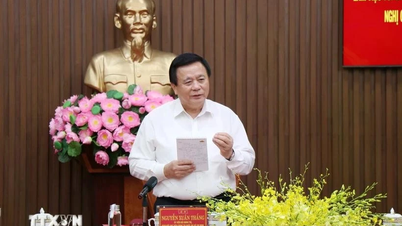
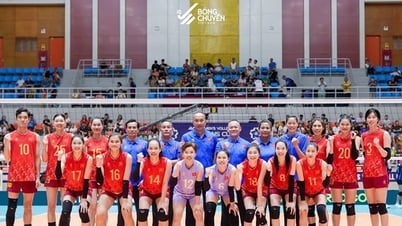







![[OCOP REVIEW] Tu Duyen Syrup - The essence of herbs from the mountains and forests of Nhu Thanh](https://vphoto.vietnam.vn/thumb/402x226/vietnam/resource/IMAGE/2025/6/5/58ca32fce4ec44039e444fbfae7e75ec)



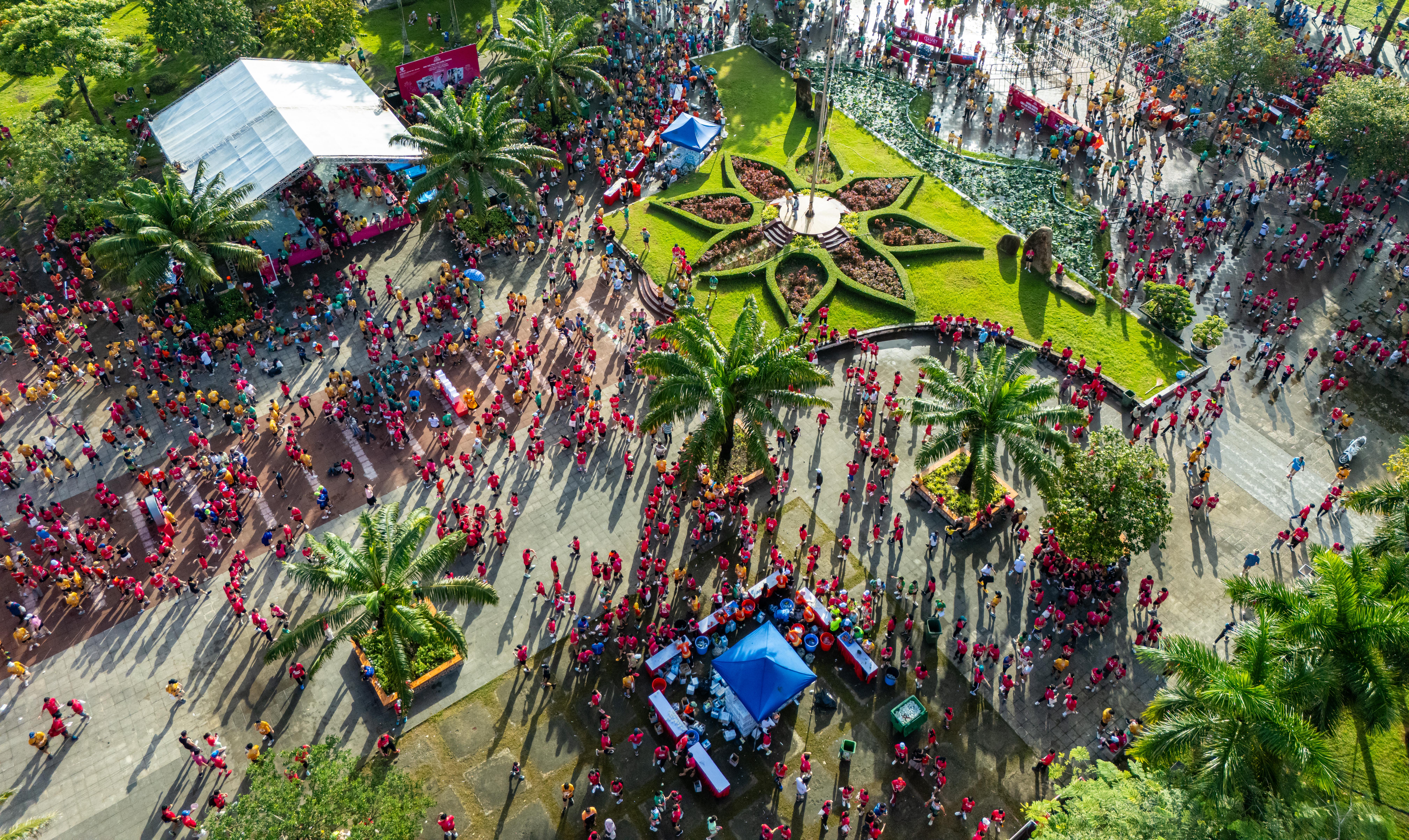

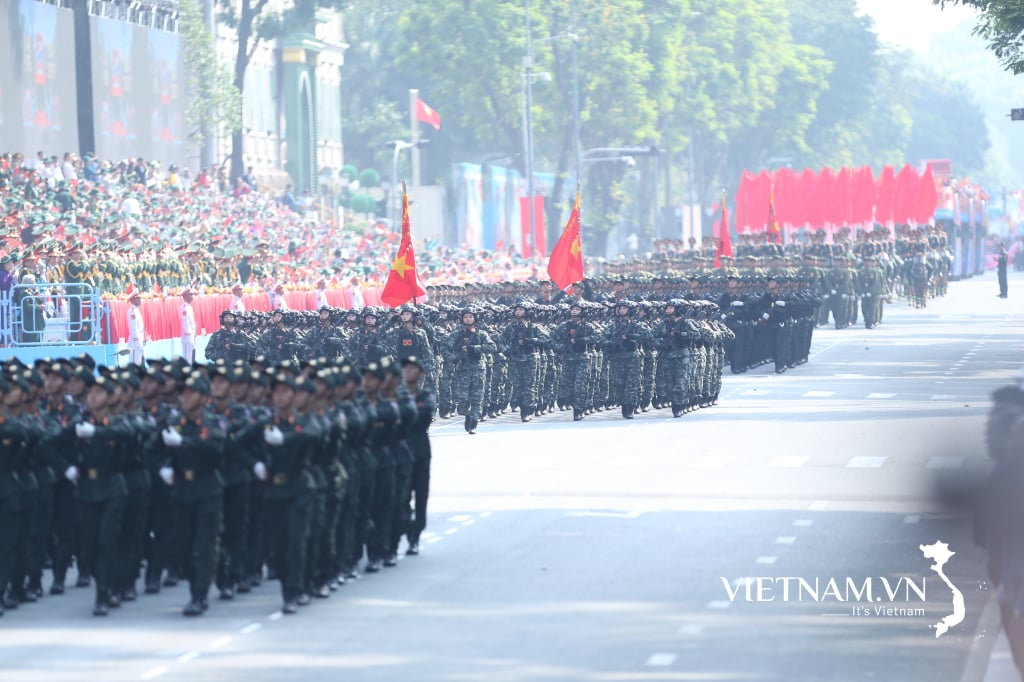
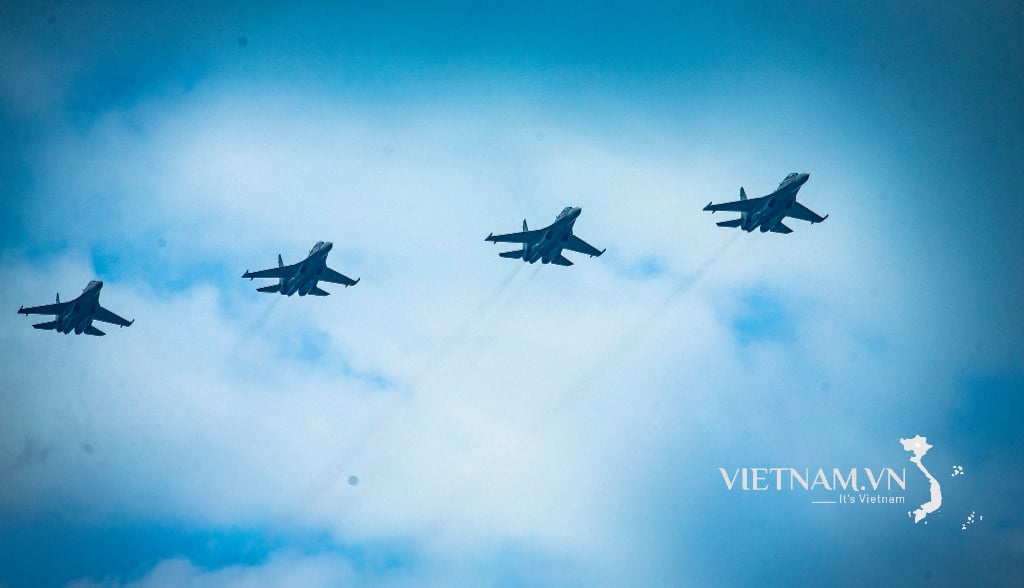
Comment (0)